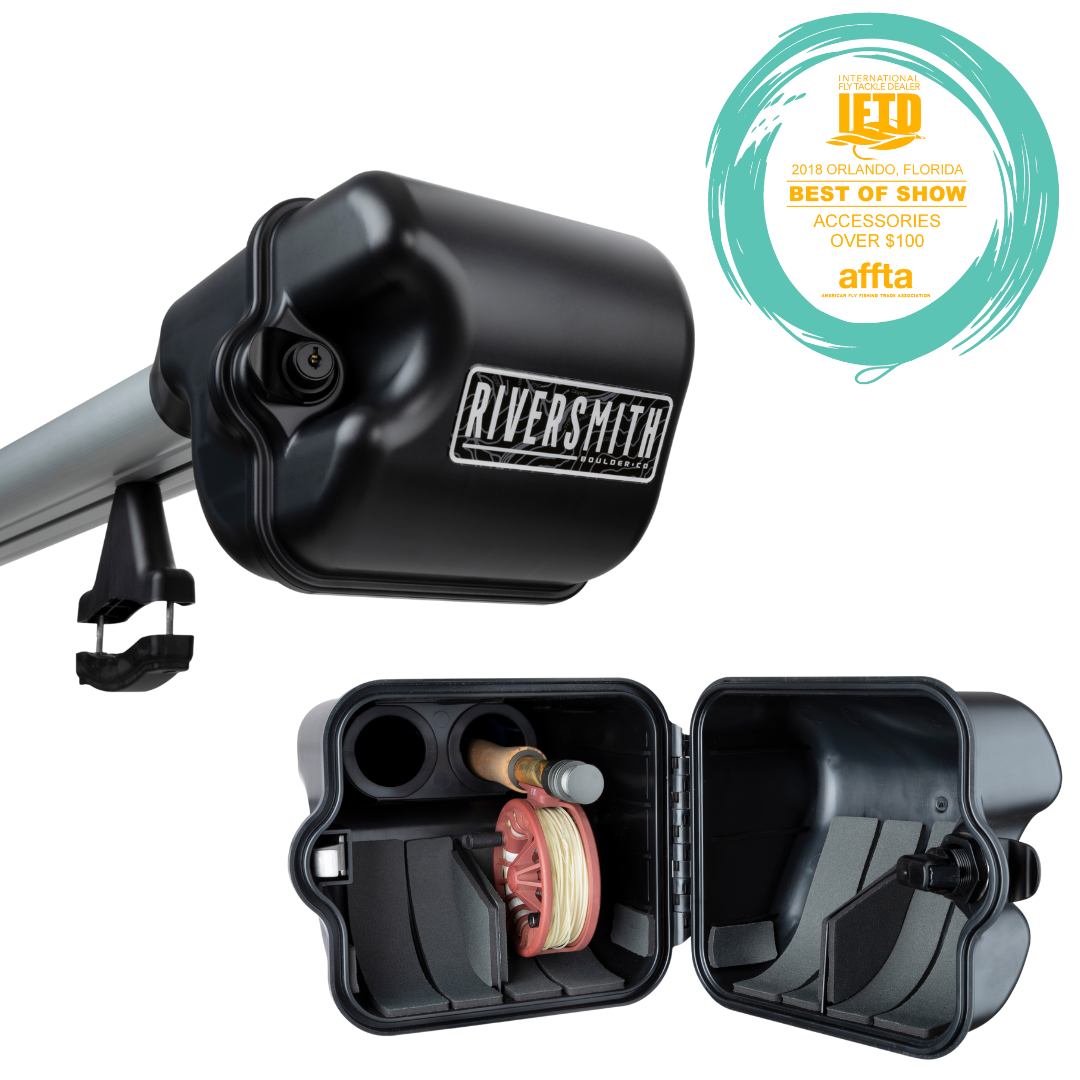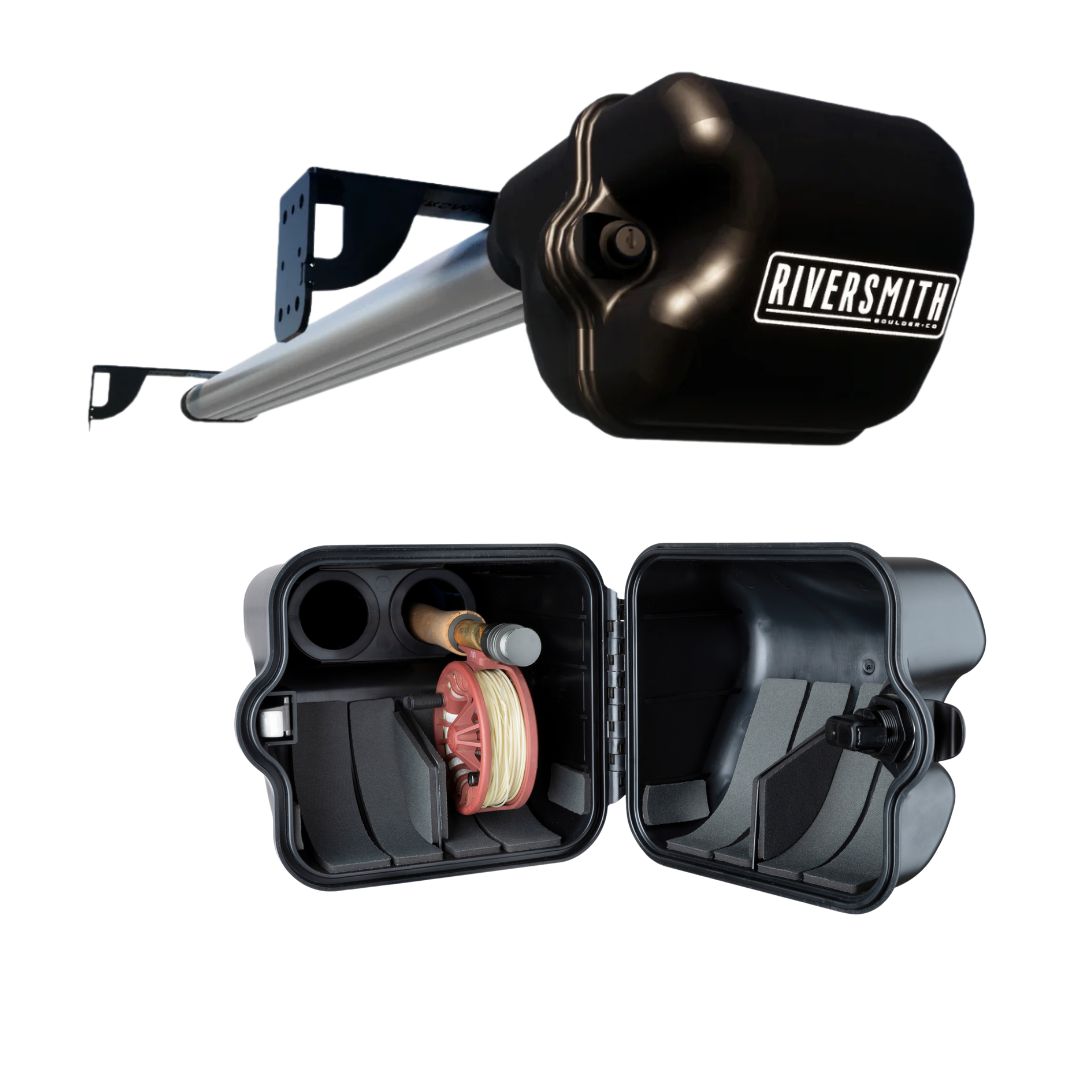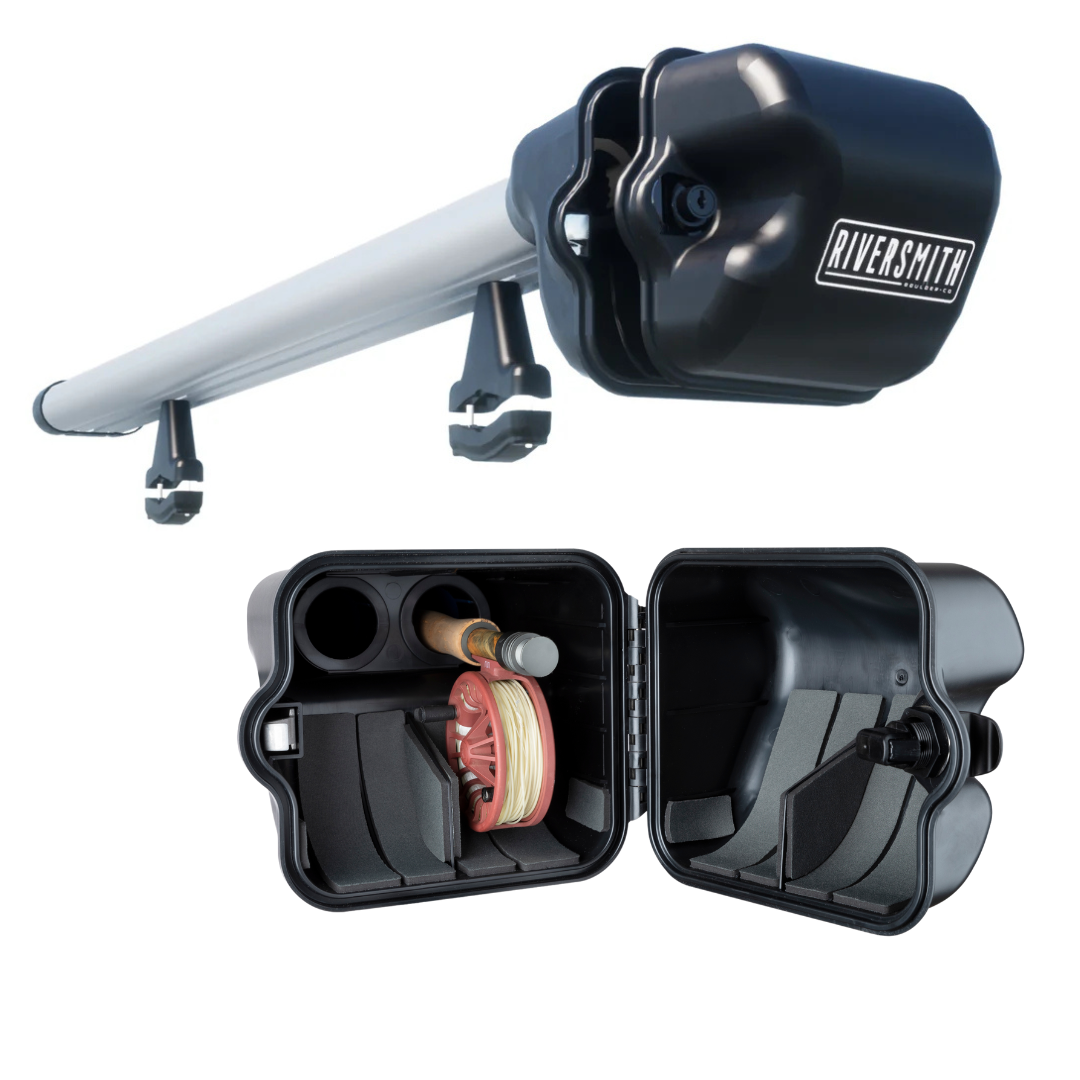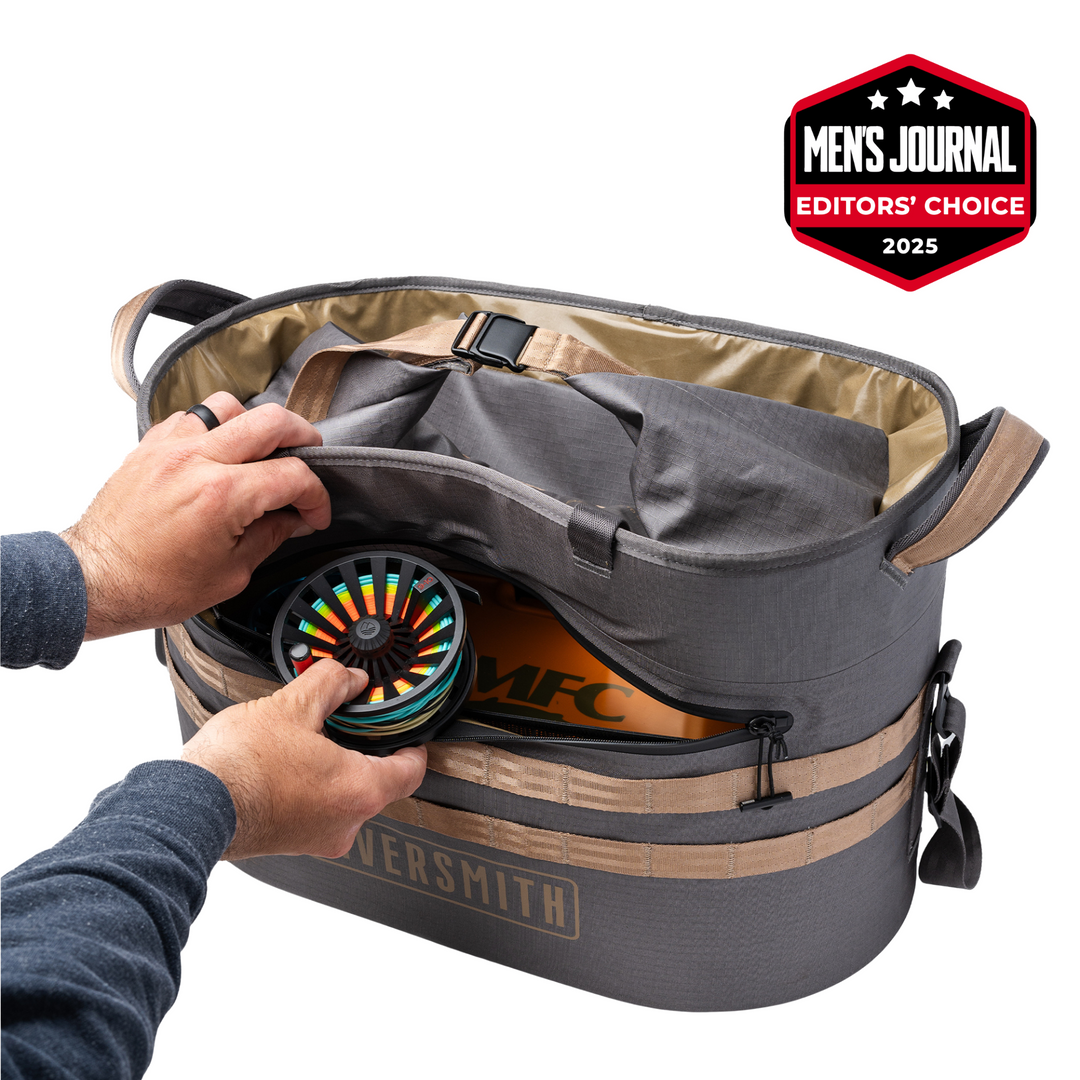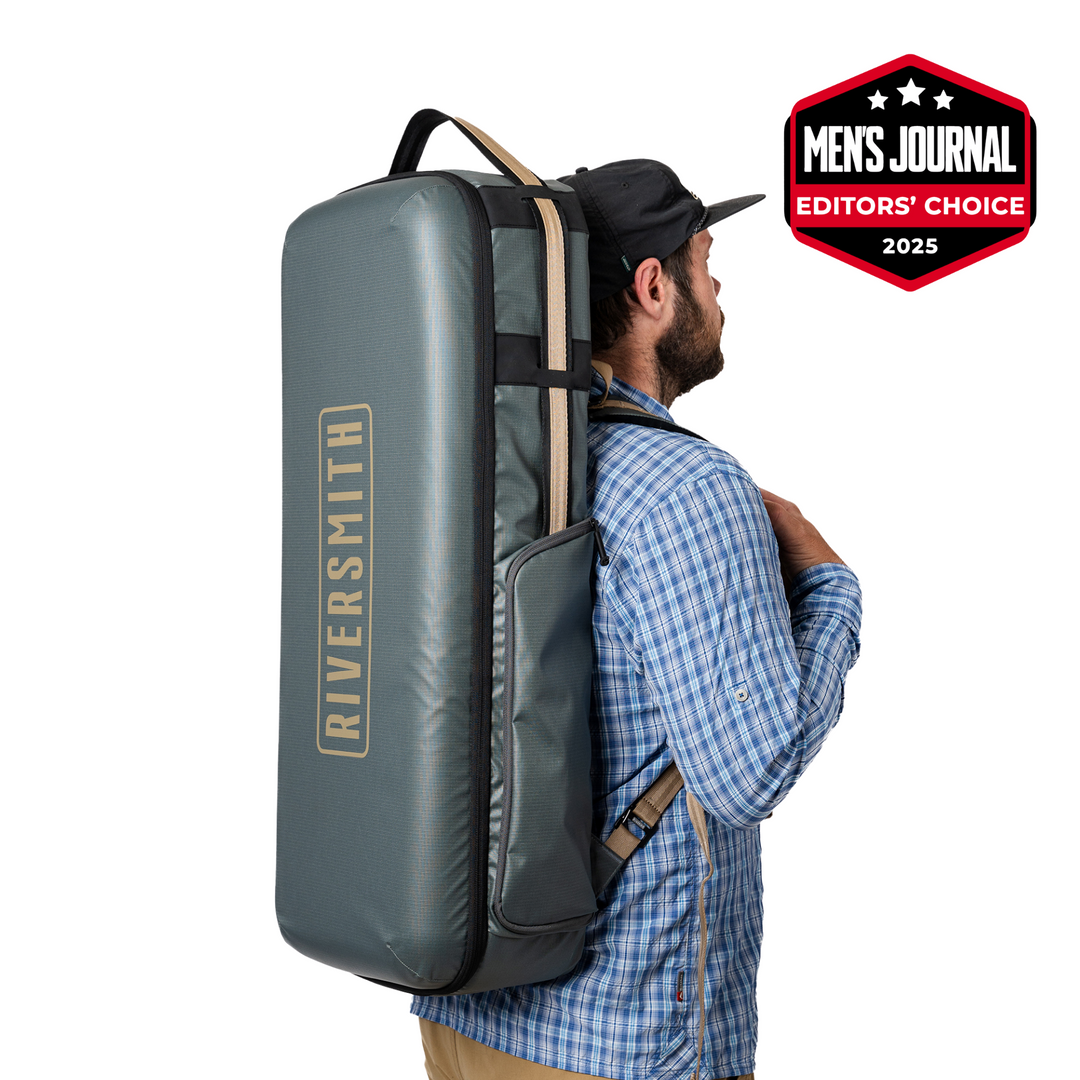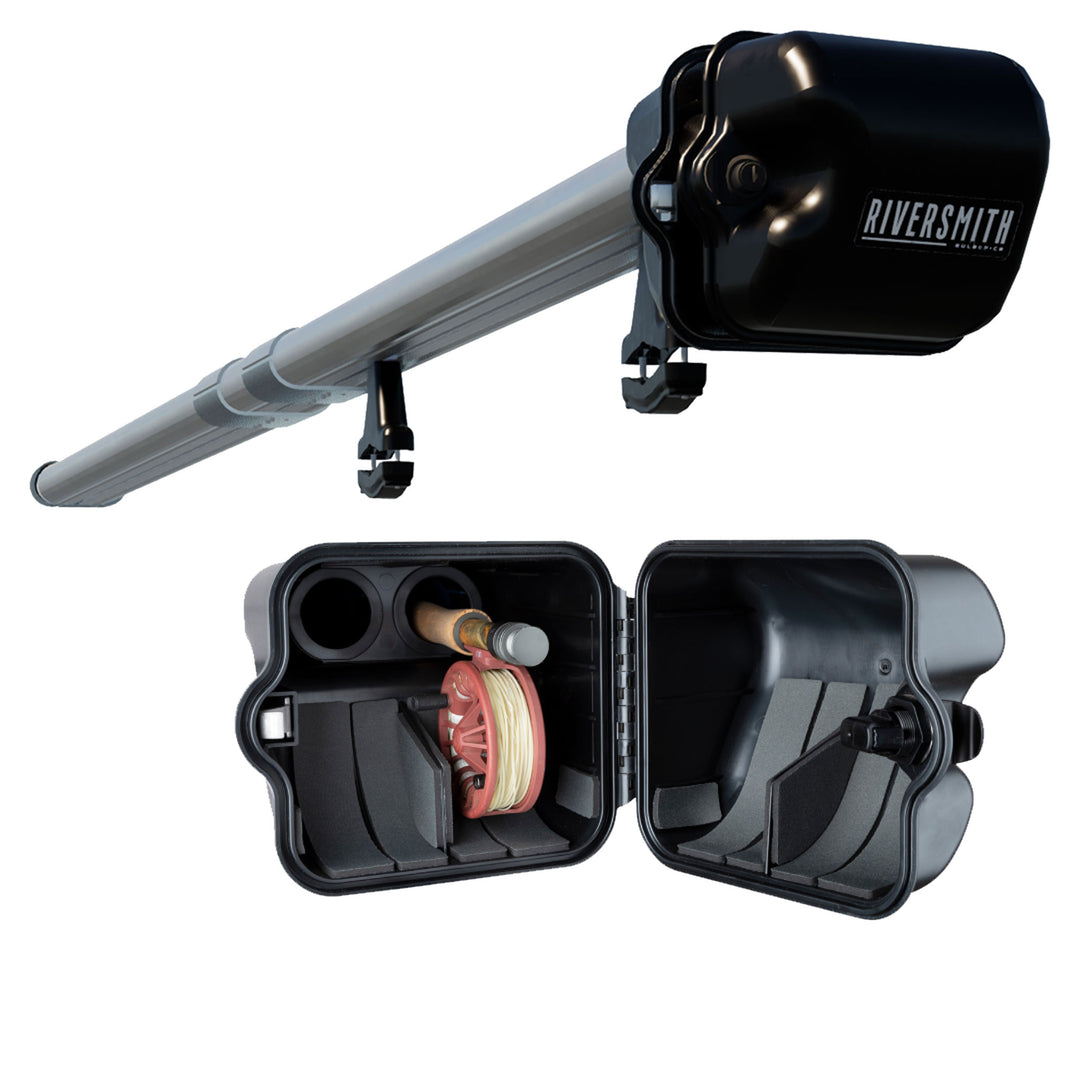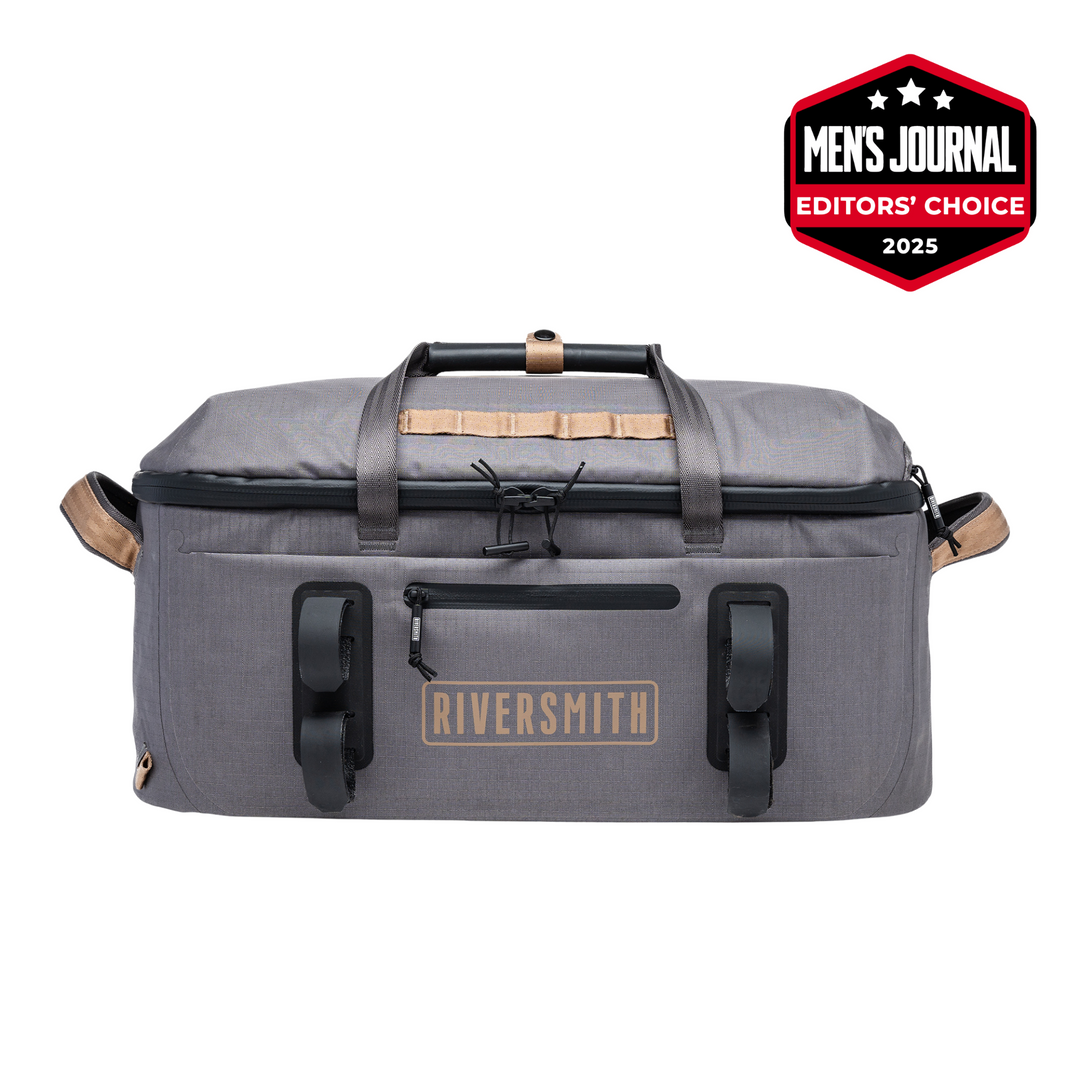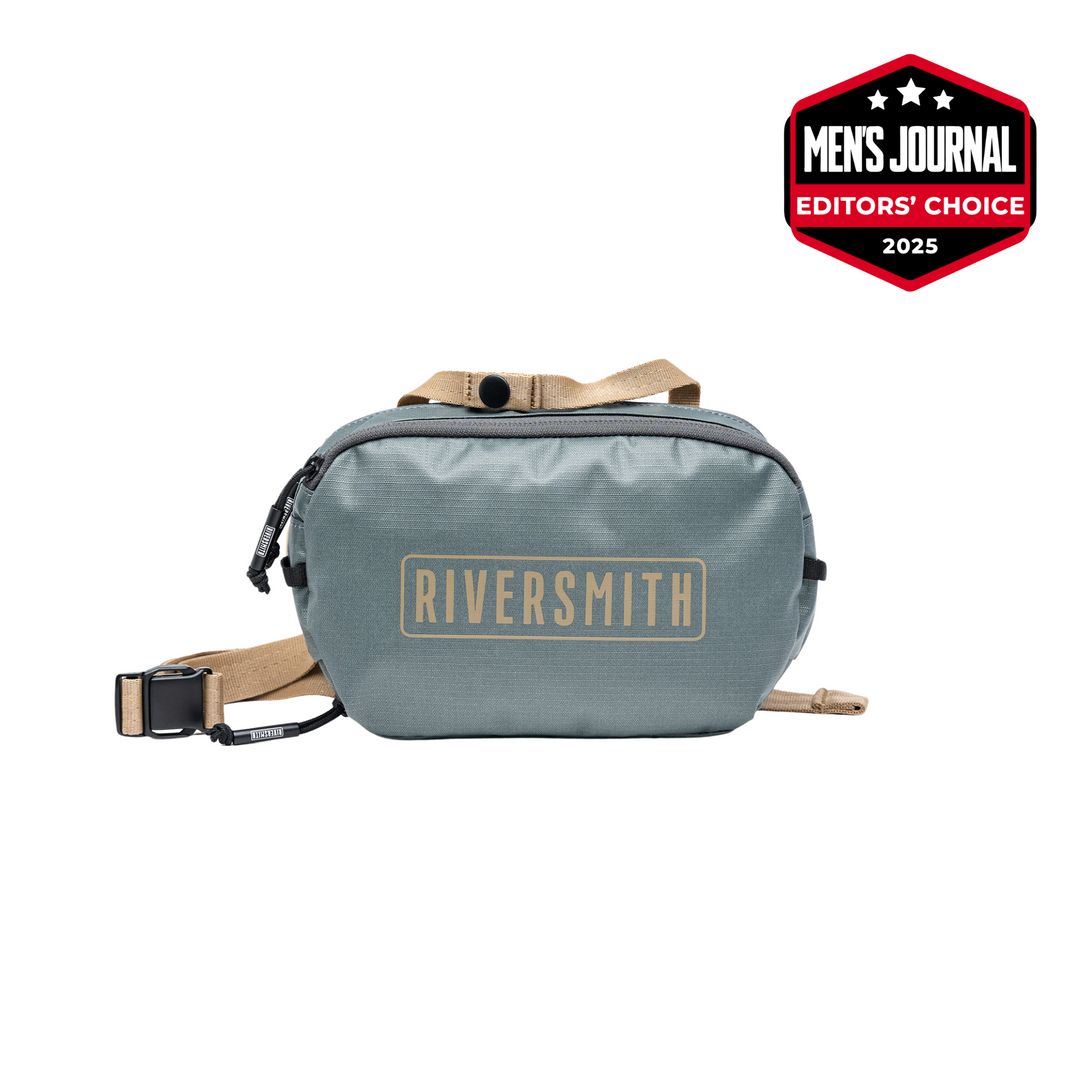Winter Fly Fishing: Strategies & Tactics
Gear & Rigging
From a fly rod and reel perspective, fishing in the winter is fairly similar to fishing in warmer months. Here in Colorado this probably means you are using a 4 wt, 5 wt, or 6 wt rod depending on what’s happening on the water. If you find a situation where fish are lazily sipping on bugs on the surface, a 4 wt rod can deliver delicate presentations with lighter tippet. If you’re dredging deeper holes with a nymph rig and weight, a 6 wt will get the job done. Looking for something that can do pretty much anything? Grab your 5 wt (see recommendations in Part I).

Image Courtesy of Riversmith Ambassador John Isola
As mentioned, you will find opportunities to present small dry fly patterns to trout in the winter, but most likely you will be leveraging sub surface tactics. There are many different rigs, style of fishing, fly choices you’ll be able to make as you observe your specific fishing situation. One fairly common rigging set up is a 9’ 5X tapered leader with section of 5X or 6X tippet depending on the flies you choose and the level of pressure these fish are feeling. A lot of fish in these more popular tailwaters see more bugs and become leader shy. I typically use a larger and/or brighter “point fly” and below that a much smaller fly, 8”-10” below. You’ll most also want to use some split shot about 6”-8” above your point fly, again, depending on the section of river you’re fishing.
Where to Fish in The Winter
I don’t like to spend a lot of time talking specifically about rivers or creeks to fish here in Colorado. Figuring it out on your own is half the fun to a well planned and executed fly fishing adventure. I do think it is worth spending some time talking about rivers in general from a strategy and tactics perspective.

angler's view of snowy riverbank with waders and boots
First off, you’ll need to find a river that is not iced over. Colorado has a number of reservoirs that feed rivers below. These upper stretches of river, just below a reservoir dam are known as tailwaters. In most cases, water from the reservoirs are flowing from the bottom so the temperatures are warmer than natural freestone rivers. That warmer water tends to leave those sections ice free and also provide a great feeding opportunity for fish that reside there.
If you need some pointers to get started, visit your local fly shop – I’m sure they’ll have great information for you.
And now… the fishing
I might sound like 'Captain Obvious' here, but it is worth mentioning that fishing in the winter is quite different than fishing in the spring, summer or fall months. The bugs are different, fish hang out in different parts of the river, they behave differently and most importantly they eat quite differently.
Put another way, if grasshoppers aren’t on the banks… they are not on the winter menu.
So you’ll want to think about insects that are more actively hatching in the winter like smaller mayflies and midges. Larger nymphs are also in the river and most likely have created some level of muscle memory, so a larger stonefly pattern can make sense as your point or attractor fly.

winter trout fishing somewhere in the Rockies
Again, look to your local fly shop about fly selection after you’ve dialed in a river that you’d like to target.
Here's what Johnnie Trujillo from Anglers All Fly Shop had to say on the topic:
"My favorite patterns for tailwater winter fishing here in Colorado are Mayers Mini Leech black and brown, perdigons in smaller sizes, Baxter's Bearded Baetis, RS2's in black and grey, Mole Fly for those film eaters," said Trujillo. "These patterns will get it done on any tailwater in the winter."
In the wintertime, fish seem to slow down. They don’t move to flies aggressively as they do in other months. When you arrive to the river, you should slow down as well. Take a little bit longer scouting where you want to fish. Spend some more time focusing on areas where you might see a rise… because that is the best case winter scenario.
When fish aren't feeding actively on the surface (which is common) I typically focus on slower deeper water where fish get to spend the least amount of calories but get a maximum amount of food delivered to them. Also, remember that in the winter months, split shot can be your friend. I once heard someone say “the difference between catching fish and not catching fish can be the weight of one split shot.”
Think about that.

catch and release winter trout next to icy water
And once I finally dial in an area where a fish responds to a presentation, there is a good chance other fish will be in that same spot, or areas of similar depth, cover and water flow.

dual-mounted 4-Banger River Quivers in the snow with fishing raft
Winter Float Fishing Can Be An Option
Although walk wading is probably the most accessible way to fish in the winter months, don't rule out float fishing options on certain rivers.

unloading a 4-Banger River Quiver
If you haven't floated in the winter before, don't own a boat, or just want some basic information on options, this is another great opportunity to visit your local fly shop.

A Swiftcast Rod Holder Protecting What's Important
Just for an example here in Colorado, Vail Valley Anglers offers winter float trips when the conditions are just right. For more information on those options, CLICK HERE.
 angler selecting from fly box while on a fishing raft
angler selecting from fly box while on a fishing raft
Mind The Forecast & Maximize Your Time On The Water
One key to success I’ve found over the year’s is keeping an eye on the forecast. If you can see a few days or higher temperatures and a good dose of cloud cover or at least intermittent light precipitation, these can be lights out here in the Rocky Mountain West. Just know that your days on the water might be shorter so you’ll want to maximize your time when the conditions are working. Also relish in the moments that are a little quieter, less crowded, and revel in any fish that delivers the feedback and a tight line.
Don't forget! If you have any fun winter fly fishing adventures Tag @riversmithusa in an instagram photo including your rig and River Quiver and win a Riversmith OnWater T-Shirt!



